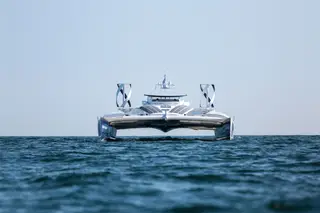Now is the right time to explore the potential of hydrogen for it to play a key role in a clean, safe and affordable energy future. This is the conclusion of a report issued this year by the International Energy Agency (IEA) on the current situation regarding the use of the molecule, which provides clues on the future development thereof. The Hydrogen Tracking Report emphasises that hydrogen is undergoing unprecedented political and commercial development, with the number of political decisions in this regard increasing and new projects appearing all over the world. In view of the current situation, it concludes that it is time to expand technologies and reduce costs in order to enable this raw material to be used in a widespread manner.
HIGH VERSATILITY
The technologies currently available enable us to produce, store, move and use hydrogen energy in a number of different ways. It is one of the components of the air in the atmosphere and water and can be produced using a wide range of energy sources, such as renewable and nuclear energy, and fossil fuels such as natural gas, coal and oil.
It can be transported in gas form through pipelines or in liquid form in ships, in a similar manner to liquefied natural gas (LNG), and transformed into electricity and methane to supply homes, power industry and drive trains, ships, cars, trucks and planes.
At a time of increasing pressure from public opinion in favour of non-polluting transport, Airbus has set an example and has gone ahead with three designs for hydrogen-powered planes. The company hopes to place a zero-emission commercial aircraft in service by 2035.
ADVANCES IN THR RAILWAY SECTOR
There are several projects under development to implement hydrogen cells in trains in Europe, which will allow for the replacement of the almost 5,000 diesel-powered trains still in operation, used mainly on the continent´s non-electrified tracks. In this regard, the United Kingdom began testing the first hydrogen-powered train in late September. HydroFLEX has been developed by a team from the University of Birmingham and Porterbrook, a company dedicated to the storage and management of rolling stock. It uses a combination of hydrogen and oxygen to generate electricity, heat and water, the ingredients needed to keep it moving.

Developed by the University of Birmingham and the company Porterbrook, HydroFLEX uses hydrogen and oxygen to generate electricity, heat and water
The carriages are equipped with technology consisting of a hydrogen tank, fuel-cell batteries and lithium batteries to store the energy produced. The British government expects the technology to be extended to more trains by 2023.
FIRST HYDROGEN VESSEL
According to the agency Reuters, there are currently projects under development worldwide to test the use of hydrogen to power ships, at a time when the maritime industry is striving to find technologies to reduce emissions and reliable and safe solutions for the commercial use of fuel. To achieve the goals defined by the United Nations for the shipbuilding industry, leaders in the industry have said that the first zero-emission ships should be sailing by 2030.

The Energy Observer began its odyssey in 2017 and has already been to Portugal
One of the first experiences registered in this area involved the Energy Observer, the world's first hydrogen-powered vessel. Unfortunately, the ship is docked in France at the moment due to the Covid-19 pandemic, but the autonomous energy vessel is hoping for a return to normality in order to continue its expedition. The “Odyssey for the Future” began in Saint-Malo, France, in 2017, and was scheduled to last for six years, with 101 stops in 50 countries including Portugal, which it visited in 2018. Backed by France, the European Commission, UNESCO and IRENA (the International Renewable Energy Agency), the idea was to test this innovative system based on the production, management and intelligent storage of energy, consisting of a combination of three sources of renewable energy - solar, wind and hydraulic - with that contained in hydrogen batteries, produced on board through the electrolysis of sea water.
ECO-FRIENDLY AUTOMOBILES: STATE BACKING
There will be 1.6 billion vehicles on our planet in 2050. The consequences of this prediction by the International Energy Agency could be extremely harmful to the balance of the environment and energy sustainability on Earth. As such, it is natural that fuel companies and transport vehicle manufacturers are investing heavily in research to reduce gas emissions to the greatest extent possible and to deal with the issue of fossil fuel shortages. And it is not only corporate organisations that are involved in these efforts, as the European Community and the US government, among others, have also been striving to encourage the search for alternative solutions, in which hydrogen is one of the most noteworthy. The ban on the production of diesel and petrol-powered cars in the United Kingdom from 2030 to support the country's 2050 zero emissions target is an example of this, as is Germany's announcement of a € 1 billion package for the development and production of environmentally friendly automobiles. Subsidies for electric and hydrogen-powered vehicles will also be increased by the German government.




